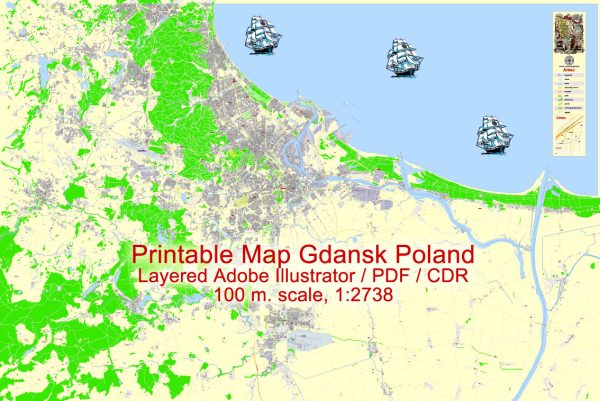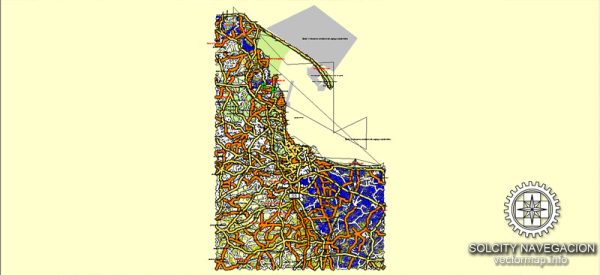Gdańsk, located on the Baltic Sea in northern Poland, has a rich history of urban development that spans over a millennium. The city has witnessed various historical events and has been shaped by different cultures and influences. Here’s a brief overview of the history of urban development in Gdańsk:
- Early History (10th-13th centuries):
- Gdańsk’s history can be traced back to the 10th century when it was a small trading settlement. It gradually developed as a key trading post due to its strategic location at the mouth of the Motława River.
- In the 13th century, Gdańsk became a member of the Hanseatic League, a powerful alliance of merchant cities. This membership significantly contributed to the city’s economic and cultural growth.
- Teutonic Knights and Royal Prussia (13th-15th centuries):
- The Teutonic Knights played a crucial role in Gdańsk’s history during the medieval period. The city became a part of the Teutonic Knights’ State in the 13th century.
- After the Thirteen Years’ War (1454–1466), Gdańsk came under the rule of the Polish Crown and became a part of the province known as Royal Prussia. The city retained a considerable degree of autonomy.
- Golden Age (16th-17th centuries):
- Gdańsk experienced a period of economic prosperity during the Renaissance. The city became a major cultural and scientific center, attracting artists, scholars, and merchants.
- The iconic Gdańsk Crane was built during this period. This massive medieval port crane symbolizes the city’s maritime heritage.
- Swedish and Prussian Rule (17th-18th centuries):
- Gdańsk faced challenges during the Swedish Deluge (1655–1660), a series of conflicts that led to significant damage and a decline in economic prosperity.
- After the Second Partition of Poland in 1793, Gdańsk was annexed by Prussia.
- Free City of Danzig (20th century):
- After World War I, Gdańsk became the Free City of Danzig, a semi-autonomous city-state under the League of Nations.
- In 1939, at the beginning of World War II, Gdańsk was annexed by Nazi Germany.
- Post-World War II and Modern Era:
- After World War II, Gdańsk became part of Poland again. The city underwent extensive reconstruction due to the damages suffered during the war.
- The Solidarity movement, led by Lech Wałęsa, played a crucial role in Gdańsk during the 1980s. The shipyards, particularly the Gdańsk Shipyard, became symbolic of the movement that ultimately contributed to the end of communist rule in Poland.
- Contemporary Gdańsk:
- Gdańsk has continued to develop as a major Polish city with a focus on commerce, culture, and tourism.
- The Old Town of Gdańsk is a UNESCO World Heritage Site, and its architecture reflects a mix of Gothic, Renaissance, and Baroque styles.
The history of urban development in Gdańsk is a fascinating journey through different historical periods, each leaving its mark on the city’s architecture, culture, and identity. The city’s resilience and ability to adapt to changing circumstances have contributed to its enduring significance in Polish history.



 Author: Kirill Shrayber, Ph.D.
Author: Kirill Shrayber, Ph.D.